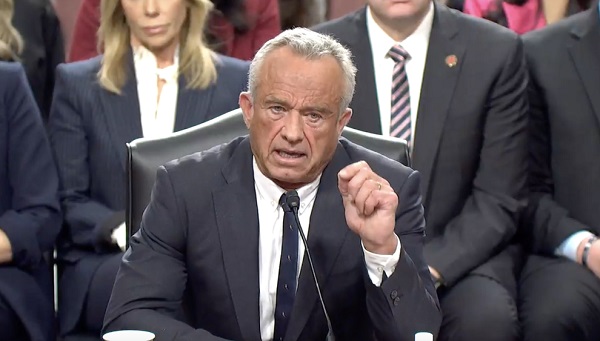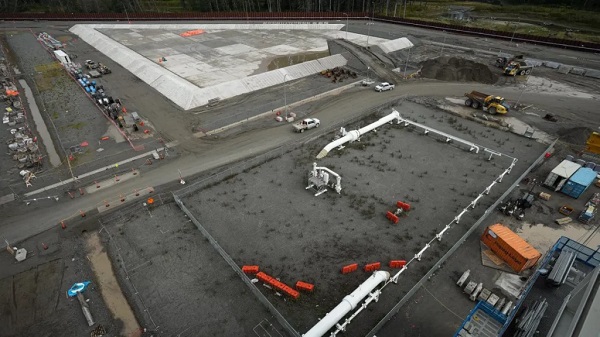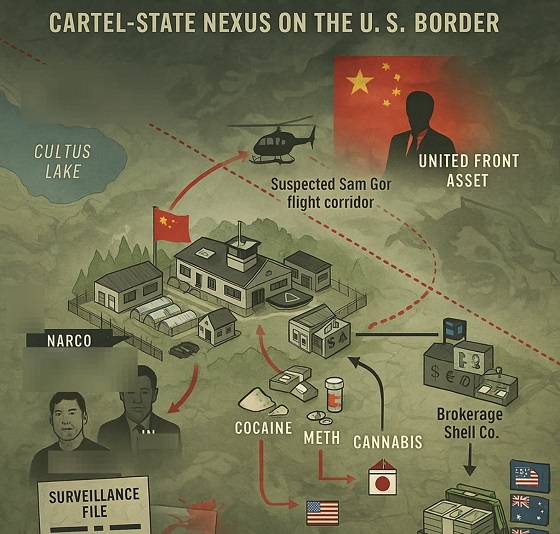Alberta
Saudi oil pivot could shake global markets and hit Alberta hard

This article supplied by Troy Media.
 By Rashid Husain Syed
By Rashid Husain Syed
Riyadh is walking away from its role as oil market stabilizer, signalling a return to market-share battles that threaten prices and Canadian revenues
After boosting crude oil output by 411,000 barrels per day (bpd) in May—triple the originally planned volume—OPEC+ shocked observers by intending to repeat the increase in June, despite slowing global demand and the dampening effects of U.S. trade tariffs.
The decision has ripple effects far beyond the Middle East. OPEC+—the alliance of the Organization of Petroleum Exporting Countries and allies such as Russia—collectively controls about 40 per cent of the world’s oil production. Its actions directly influence global oil prices, which in turn affect everything from gasoline prices across Canada to government revenues in resource-dependent provinces like Alberta.
Is OPEC+ sabotaging itself?
The move contradicts the group’s modus operandi of the past several years. Since 2016, OPEC+, led by Saudi Arabia, has tried to balance global oil markets by curbing output. At its peak, the group cut production by more than five million barrels per day—about five per cent of global supply—with Saudi Arabia alone contributing two-fifths of that total.
This strategy was meant to stabilize prices and ensure petrostates such as Saudi Arabia could meet ballooning budget demands. Many OPEC members remain heavily reliant on oil revenues to fund government spending, with few alternative income streams.
But after years of shouldering the burden, Riyadh appears to have had enough. Reuters recently reported that Saudi officials have been quietly telling allies and industry experts the kingdom is no longer willing to continue absorbing the cost of propping up global prices through deeper cuts.
There is logic behind this frustration. Despite OPEC+ efforts, markets remain volatile. Crude has dropped about 19 per cent this year, briefly touching a four-year low, mainly due to fears that U.S. tariffs will reduce global energy demand.
Some of this instability can be traced to cheating within OPEC+. Several members, including Iraq, Kazakhstan and Russia, have regularly exceeded their quotas, often at Saudi Arabia’s expense.
Riyadh’s patience appears to have run out. “OPEC’s decision framework appears to be fueled by persistent cheating,” noted TD Cowen strategists Dan Ghali and Bart Melek. The group warned in a note to clients that inventories could rise by 200 million barrels in the next three quarters, potentially pushing crude prices into the low US$50 range.
Saudi Arabia has no intention of sacrificing more market share to cover for others. This echoes an earlier episode when former Saudi oil minister Ali AlNaimi, frustrated by similar quota violations and the rise of U.S. shale producers, chose to flood the market to protect Saudi interests. In 2016, he famously told American drillers they could “lower costs, borrow cash or liquidate” as prices sank below US$50 per barrel.
The result was carnage in the oil patch—and a temporary ceasefire among producers.
History may be repeating itself. With other OPEC+ members again failing to meet targets, sources told Reuters that Riyadh is now shifting strategy. Rather than continuing to play the role of swing producer, Saudi Arabia may focus on regaining market share by boosting production, effectively stepping back from the group’s five-year effort to balance prices.
Despite its dependency on oil revenues, the kingdom appears ready to endure lower prices. Media reports quoting government sources suggest Saudi Arabia may increase borrowing and scale back spending to compensate. “The Saudis are ready for lower prices and may need to pull back on some major projects,” one insider told Reuters.
Saudi Arabia needs prices above US$90 per barrel to balance its budget—a higher threshold than other major producers such as the United Arab Emirates, according to the International Monetary Fund (IMF).
Theories abound about the motivations behind the kingdom’s apparent policy shift: retaliation against quota-busting allies, competition with emerging producers like the United States and Guyana, or even an attempt to please U.S. President Donald Trump, who has publicly called for higher OPEC output to ease gasoline prices.
Whatever the motivation, the consequences are real. The IMF has lowered its economic growth forecast for oil-exporting Middle East countries to 2.3 per cent from four per cent projected in October, citing lower prices and rising geopolitical uncertainty. It also revised Saudi Arabia’s growth outlook to three per cent from 3.3 per cent after oil prices fell 13 per cent in the past month alone. This has implications far beyond the Middle East, including for Canada. For Alberta, where oil sales remain a pillar of the economy, weakening global prices mean reduced royalties, tighter fiscal planning and less room for public investment.
As global oil markets enter another uncertain chapter, the aftershocks will be felt from Riyadh to Edmonton.
Toronto-based Rashid Husain Syed is a highly regarded analyst specializing in energy and politics, particularly in the Middle East. In addition to his contributions to local and international newspapers, Rashid frequently lends his expertise as a speaker at global conferences. Organizations such as the Department of Energy in Washington and the International Energy Agency in Paris have sought his insights on global energy matters.
Troy Media empowers Canadian community news outlets by providing independent, insightful analysis and commentary. Our mission is to support local media in helping Canadians stay informed and engaged by delivering reliable content that strengthens community connections and deepens understanding across the country.
Alberta
Alberta Precipitation Update

Below are my updated charts through April 2025 along with the cumulative data starting in October 2024. As you can see, central and southern Alberta are trending quite dry, while the north appears to be faring much better. However, even there, the devil is in the details. For instance, in Grande Prairie the overall precipitation level appears to be “normal”, yet in April it was bone dry and talking with someone who was recently there, they described it as a dust bowl. In short, some rainfall would be helpful. These next 3 months are fairly critical.
Thanks for reading William’s Substack!
Subscribe for free to receive new posts and support my work.
Alberta
Alberta’s move to ‘activity-based funding’ will improve health care despite naysayer claims

From the Fraser Institute
After the Smith government recently announced its shift to a new approach for funding hospitals, known as “activity-based funding” (ABF), defenders of the status quo in Alberta were quick to argue ABF will not improve health care in the province. Their claims are simply incorrect. In reality, based on the experiences of other better-performing universal health-care systems, ABF will help reduce wait times for Alberta patients and provide better value-for-money for taxpayers.
First, it’s important to understand Alberta is not breaking new ground with this approach. Other developed countries shifted to the ABF model starting in the early 1990s.
Indeed, after years of paying their hospitals a lump-sum annual budget for surgical care (like Alberta currently), other countries with universal health care recognized this form of payment encouraged hospitals to deliver fewer services by turning each patient into a cost to be minimized. The shift to ABF, which compensates hospitals for the actual services they provide, flips the script—hospitals in these countries now see patients as a source of revenue.
In fact, in many universal health-care countries, these reforms began so long ago that some are now on their second or even third generation of ABF, incorporating further innovations to encourage an even greater focus on quality.
For example, in Sweden in the early 1990s, counties that embraced ABF enjoyed a potential cost savings of 13 per cent over non-reforming counties that stuck with budgets. In Stockholm, one study measured an 11 per cent increase in hospital activity overall alongside a 1 per cent decrease in costs following the introduction of ABF. Moreover, according to the study, ABF did not reduce access for older patients or patients with more complex conditions. In England, the shift to ABF in the early to mid-2000s helped increase hospital activity and reduce the cost of care per patient, also without negatively affecting quality of care.
Multi-national studies on the shift to ABF have repeatedly shown increases in the volume of care provided, reduced costs per admission, and (perhaps most importantly for Albertans) shorter wait times. Studies have also shown ABF may lead to improved quality and access to advanced medical technology for patients.
Clearly, the naysayers who claim that ABF is some sort of new or untested reform, or that Albertans are heading down an unknown path with unmanageable and unexpected risks, are at the very least uninformed.
And what of those theoretical drawbacks?
Some critics claim that ABF may encourage faster discharges of patients to reduce costs. But they fail to note this theoretical drawback also exists under the current system where discharging higher-cost patients earlier can reduce the drain on hospital budgets. And crucially, other countries have implemented policies to prevent these types of theoretical drawbacks under ABF, which can inform Alberta’s approach from the start.
Critics also argue that competition between private clinics, or even between clinics and hospitals, is somehow a bad thing. But all of the developed world’s top performing universal health-care systems, with the best outcomes and shortest wait times, include a blend of both public and private care. No one has done it with the naysayers’ fixation on government provision.
And finally, some critics claim that, under ABF, private clinics will simply focus on less-complex procedures for less-complex patients to achieve greater profit, leaving public hospitals to perform more complex and thus costly surgeries. But in fact, private clinics alleviate pressure on the public system, allowing hospitals to dedicate their sophisticated resources to complex cases. To be sure, the government must ensure that complex procedures—no matter where they are performed—must always receive appropriate levels of funding and similarly that less-complex procedures are also appropriately funded. But again, the vast and lengthy experience with ABF in other universal health-care countries can help inform Alberta’s approach, which could then serve as an example for other provinces.
Alberta’s health-care system simply does not deliver for patients, with its painfully long wait times and poor access to physicians and services—despite its massive price tag. With its planned shift to activity-based funding, the province has embarked on a path to better health care, despite any false claims from the naysayers. Now it’s crucial for the Smith government to learn from the experiences of others and get this critical reform right.
-

 Autism2 days ago
Autism2 days agoNIH, CMS partner on autism research
-

 Economy1 day ago
Economy1 day agoCanada’s Energy Wealth Is Bleeding South
-

 Business2 days ago
Business2 days agoInnovative Solutions Like This Plan To Provide Power For Data Centres Will Drive Natural Gas Demand For Decades
-

 Alberta1 day ago
Alberta1 day agoAlberta’s move to ‘activity-based funding’ will improve health care despite naysayer claims
-

 espionage24 hours ago
espionage24 hours agoHong Kong Police Detain Relatives of Canadian Candidate Targeted by Beijing Election Interference
-

 International1 day ago
International1 day agoCardinals elect Robert Francis Prevost, first American pope to lead Catholic church
-

 Business1 day ago
Business1 day agoTrump announces UK will fast-track American products under new deal
-

 International1 day ago
International1 day agoNew pope elected, white smoke from the Vatican









